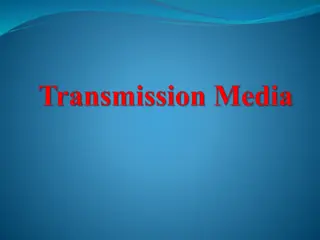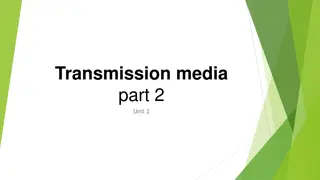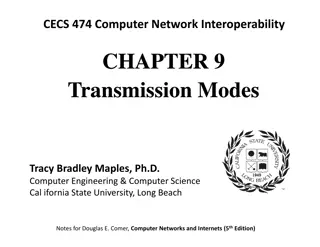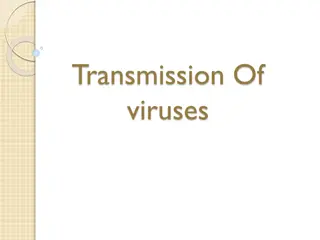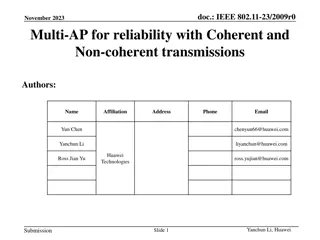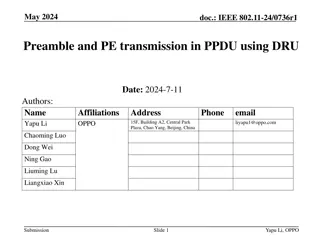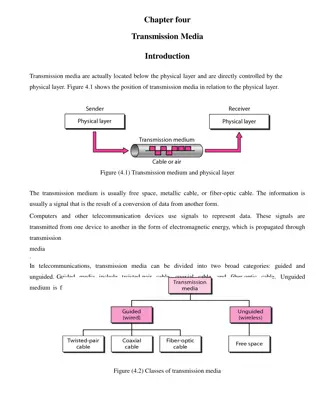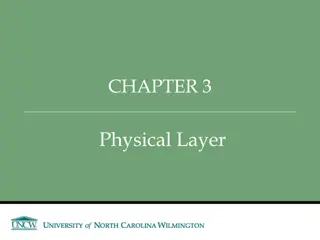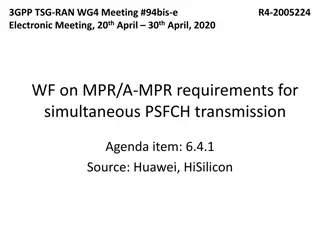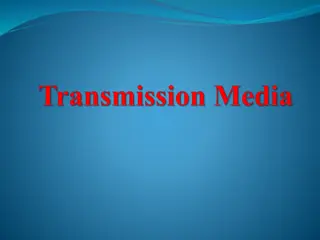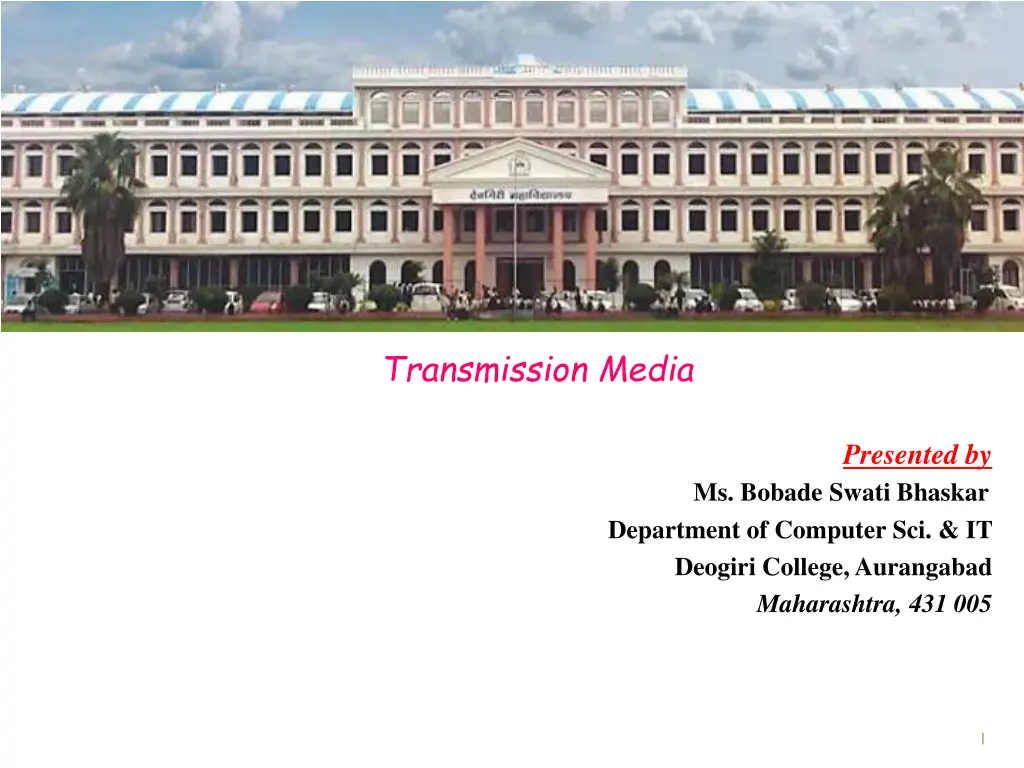
Understanding Transmission Media Types
Explore various transmission media types used in communication technology, including wireless waves, antennas, microwave technologies, terrestrial and satellite communication. Learn about their applications, characteristics, and usage in different scenarios.
Download Presentation

Please find below an Image/Link to download the presentation.
The content on the website is provided AS IS for your information and personal use only. It may not be sold, licensed, or shared on other websites without obtaining consent from the author. If you encounter any issues during the download, it is possible that the publisher has removed the file from their server.
You are allowed to download the files provided on this website for personal or commercial use, subject to the condition that they are used lawfully. All files are the property of their respective owners.
The content on the website is provided AS IS for your information and personal use only. It may not be sold, licensed, or shared on other websites without obtaining consent from the author.
E N D
Presentation Transcript
Transmission Media Presented by Ms. Bobade Swati Bhaskar Department of Computer Sci. & IT Deogiri College, Aurangabad Maharashtra, 431 005 1
Figure Wireless transmission waves Bluetooth
Figure Omnidirectional antennas Radio waves are used for multicast communications, such as radio and television, and paging systems.
Figure Unidirectional antennas Microwaves are used for unicast communication such as cellular telephones, satellite networks, and wireless LANs.
Microwave Terrestrial Microwave Satellite Microwave
Terrestrial Microwave Land-based, line-of-sight transmission Approximately 20-30 miles maximum between towers Transmits data at hundreds of millions of bits per second Popular with telephone companies and business to business transmissions
Often the microwave antennas are on towers and buildings
Satellite Communication Similar to terrestrial microwave except the signal travels from a ground station on earth to a satellite and back to another ground station. Satellites can be classified by how far out into orbit each one is (LEO, MEO, GEO, and HEO).
Satellite Microwave LEO - Low Earth Orbit 100 miles Used for pagers, wireless e-mail, special mobile telephones, spying, videoconferencing. GEO - Geosynchronous Orbit - 22,300 miles. Used for weather, television, and government operations. MEO - Middle Earth Orbit - 1000 miles. Used for GPS and government.
HEO Orbit A fourth type of orbit used by the military for spying and by scientific organizations for photographing celestial bodies. When satellite is far out into space, it takes photos. When satellite is close to earth, it transmits data.
Infared Transmission Infrared signals can be used for short-range communication in a closed area using line-of-sight propagation.
Infared Transmission Short-range communication Frequency 100 GHz 1000 THz Use a focused ray of light Point-to-point Line-of-sight 100 Kbps 16 Mbps Broadcast Reflective 1 Mbps Device-to-device transfers remote control PDA Notebook Cellular phone IrDA standard: Infrared Data Association
Bluetooth Operate in noisy radio frequency environments 2.402 GHz - 2.480 GHz omni-directional Point-to-multipoint frequency-hopping scheme 79 hops (RF channels) 1 MHz apart. bandwidth is reduced in Japan, France and Spain The maximum frequency hopping rate is 1600 hops/s link range Usually 10 centimeters to 10 meters Can be extended to more than 100 meters by increasing the transmit power Small amounts of data 1Mbps over short distances (up to 10 meters).
Bluetooth Very Low power device Based on the IEEE 802.11 standard Not designed to carry heavy traffic loads Fast acknowledgement



